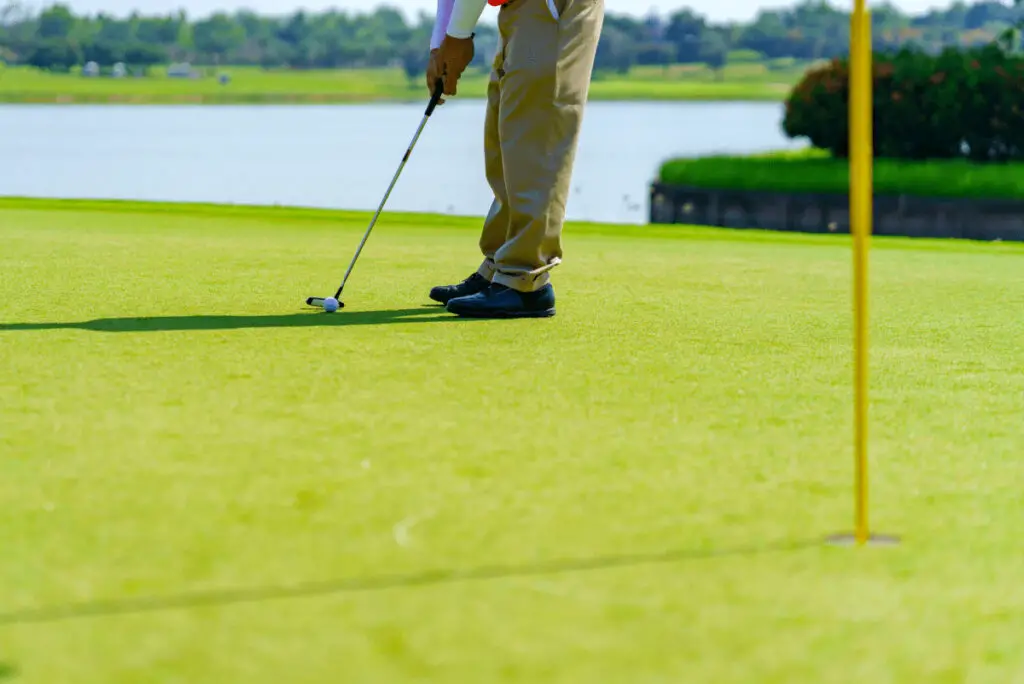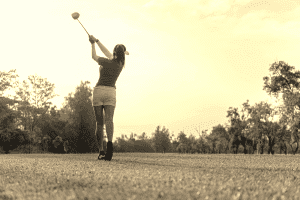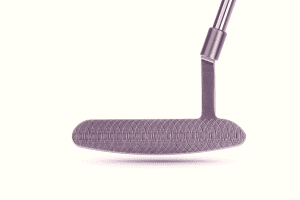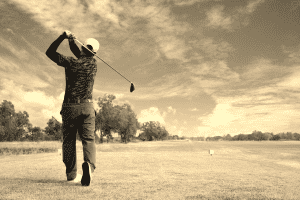Every golf club in your bag is held the same way, with the exception of the putter. With a putter in your hands, you have some creative freedom to hold the club the way that you would like. In truth, there is no single correct putter grip, which is kind of nice! Instead, the best way to grip a putter is the one that feels comfortable to the player.
I’ve always held my putter with a basic reverse overlap grip, as this was the only style taught to me! However, in working with these different styles, I’ve learned a lot about the impact your grip has on your putting stroke.
If you want to understand how to grip a putter and the different options that could help you succeed on the course, keep reading!
How to Grip a Putter: Common Putter Grip Styles
There are lots of unique ways you can grip a putter. However, we will look at the five most common ways, and then you can combine and alter these to work for your needs.
Reverse Overlap Grip -Most Common way to hold a putter
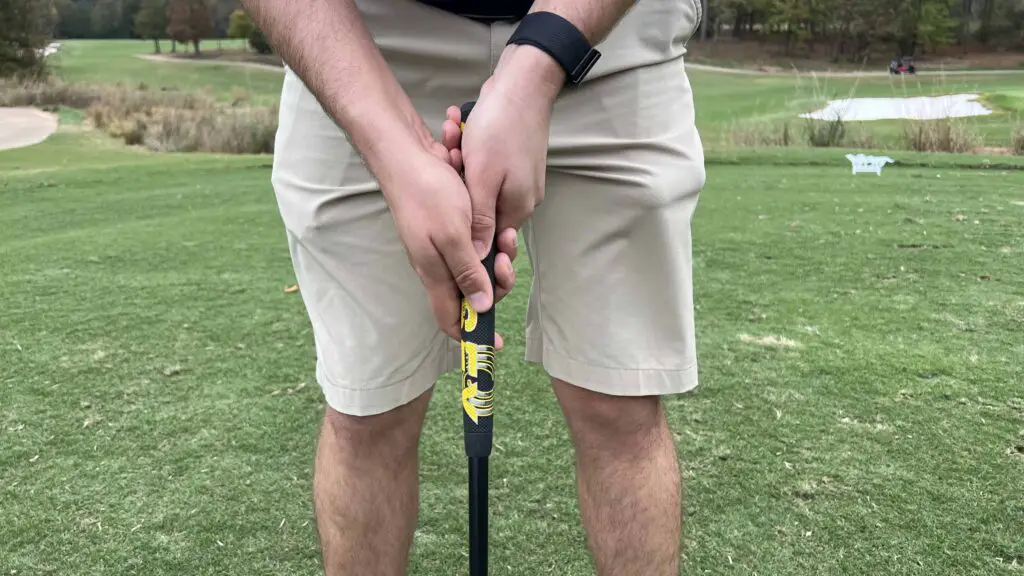
The most common of the ways to grip a putter is the reverse overlap. With this grip, you will take a standard overlap grip and reverse which finger is on top. Standard overlap grips have the pinky on top of the left index finger (for right handed players).
When holding the club in the reverse overlap position, the left index finger will be over your right pinky finger.
The goal of the reverse overlap grip is to make it easier to lower grip pressure. Golfers find the reverse overlap to be a good way to get both hands working together.
Left Hand Low/Cross-Handed Grip
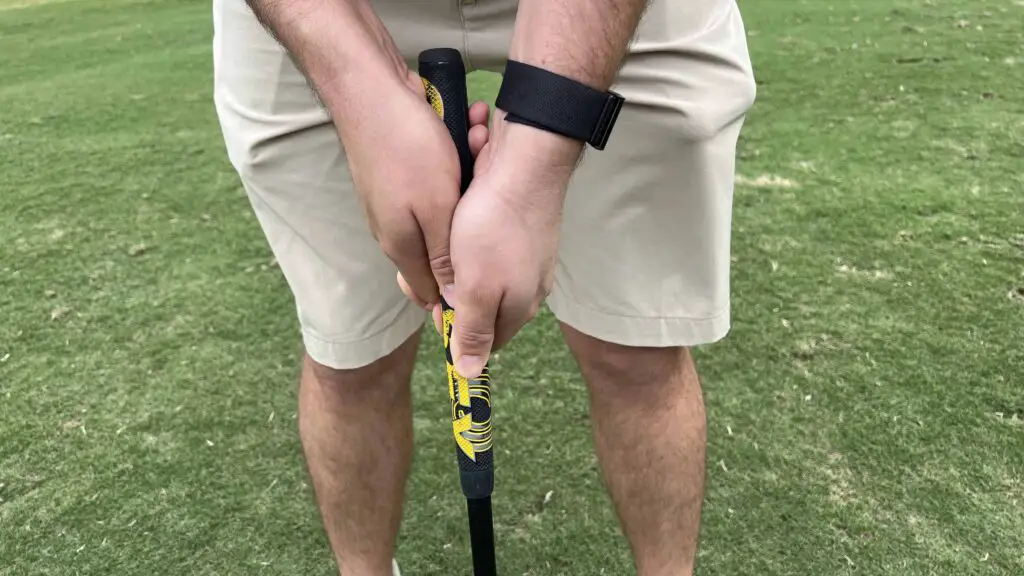
A standard golf grip has your left hand at the top and the right hand below it. Another common putting grip is to switch these hands. The right hand goes to the top, and the left hand goes to the bottom. For golfers, this feels a bit like switching from lefty to righty.
With the left hand low putting grip, expect to have much more stability in the golf putting stroke. You will be able to stay on line for those shorter putts, and your hand and wrist movement is much more restricted with the left hand low.
I love this putting grip for those that feel inconsistency is a problem in their putting stroke. The setup for the grip is simple; you can try it on the course today, and you will almost instantly notice its impact on your game.
The Claw Putting Grip
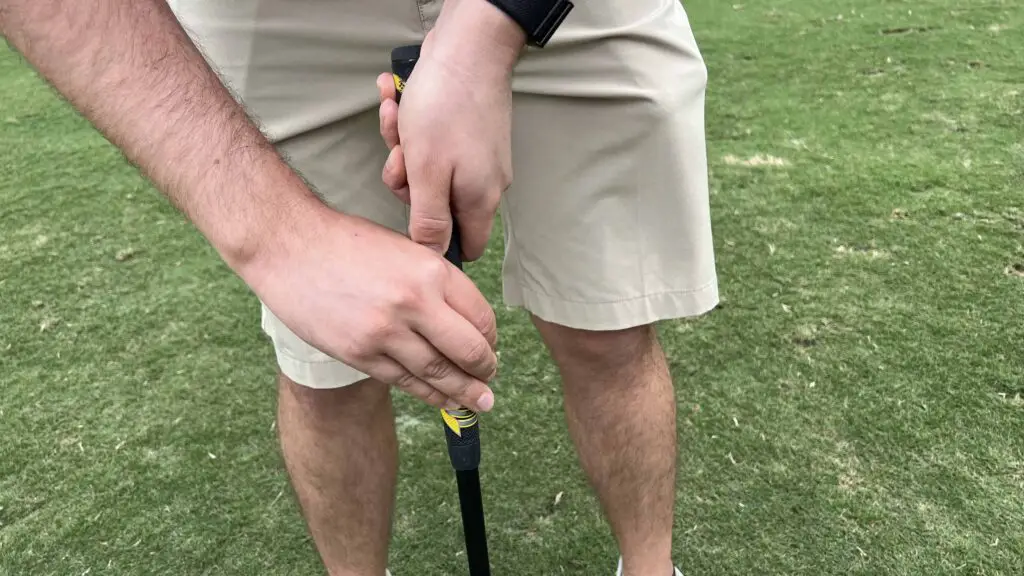
The claw putting grip is one of the most unique-looking options for golfers. In fact, it’s kind of funky. The hardest part of this claw putting grip is getting your hands into a place that you feel is correct; it takes a little trial and error.
The left hand is put onto the putter the same way it always is. You can keep the left hand as the lead hand, something that we often try to do in the full golf swing to maintain consistency.
Where the claw putting grip differs is in the right hand. This is where the “claw” part comes in. With the claw grip, the index and middle fingers rest on top of the shaft, and the putter will then be grabbed by the claw that your thumb creates with these other fingers.
The claw grip makes the left hand the steady hand in the putting stroke. This is a good option for those that feel like the right hand is trying to take over or control the putting stroke.
I always felt like my right hand positioning was hard to get perfect with the claw grip. When I started talking to other great players and looking at what golfers were doing, I realized there was some wiggle room for exactly how the right hand sits.
In other words, if you find something that works for you, stick with it!
Prayer Putting Grip
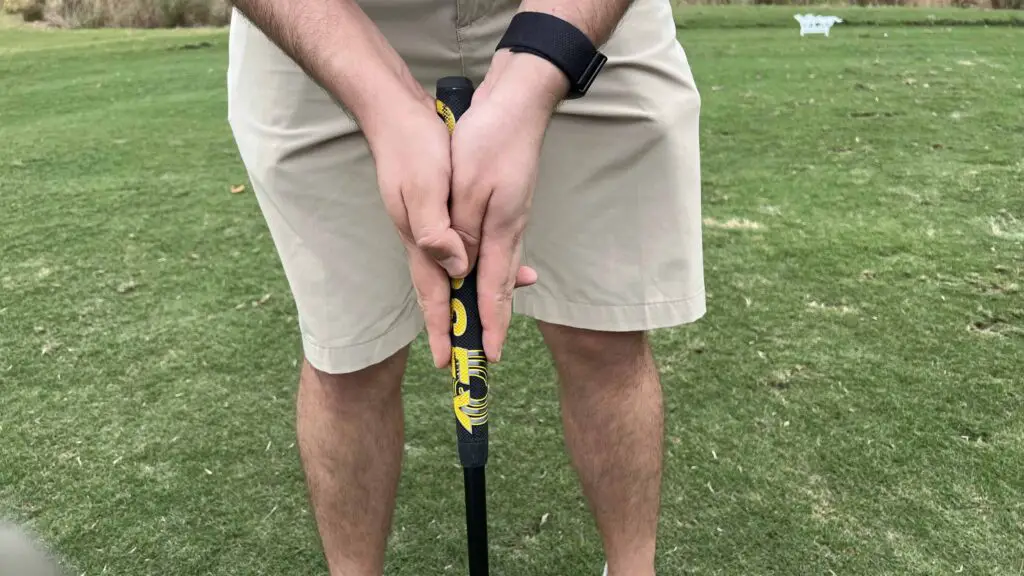
The prayer putting grip is unique in that instead of your hands being at two different levels on the putter, they will be parallel to each other.
For the prayer putting grip, take your left hand and put it at the top of your putter grip with your index finger pointing down the shaft. Then take your right hand and put it directly across from the left hand with your index finger pointing down the shaft.
Both hands will be facing each other as if you were praying.
One thing to keep in mind is that a standard golf grip will not work; you will need to have a larger grip put on that will accommodate both hands next to each other in this way.
The prayer grip is certainly less conventional, but it’s an option that golfers who struggle with stability have switched to in recent years.
Armlock Grip
Armlock putting has become more and more popular on the PGA Tour, and therefore more amateur golfers want to use it. The idea here is to make the left arm an extension of the putting shaft.
As much as I suggest trying a putting grip before you officially switch to it, that will be hard with the armlock. You need to replace the grip and sometimes get an extension on your putter to do this properly.
Essentially your left arm is stretched all the way down the shaft of the putter, and then your right hand comes along for the ride. Some golfers put their right hand at the top and have it hold the left arm and the putter grip; others move it down towards the bottom.
Armlock grips are very calculated and mathematical, and that’s exactly why we see golfers like Bryson using them on the golf course.
FAQ
Here are a few of the most commonly asked questions about how to grip a putter.
How Should a Beginner Grip a Putter?
Beginners should stick with the reverse overlap grip or the left hand low grip. These make it simple to get your hands in the proper location and make sure it’s repeated each time.
What is the best putting grip style overall?
The best putting grip overall is typically considered the reverse overlap. However, there is no way to say that this will be the perfect choice for your game. Trial and error can help you decide which to move to the top of your list.
Should you grip your putter loosely?
It’s always best to lower grip pressure on your putter and ensure you are not gripping the club too tightly. Lowering grip pressure allows the movement of the putter along the lines without you having to force it.
Final Thoughts
At this point, you should feel inspired to head out to the putting green and start working on your stroke. You may find that leaving your grip precisely as it is, is the best choice for you. However, the majority of golfers will make some small tweaks to their putting grip to make it their own.
When learning how to grip a putter, make sure you give each method a fair shot. Taking just one putt won’t really give you enough information. Take your time and really try to focus on the results that you are getting with each individual club you try.

